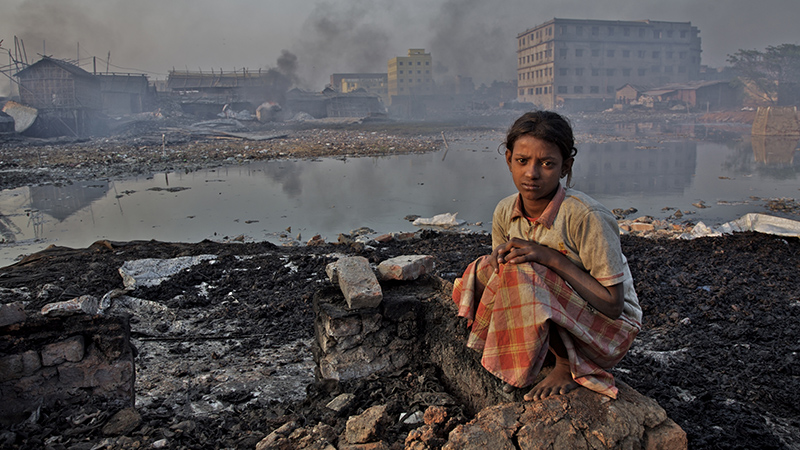It’s worth arriving at a UN climate summit tooled up with stats: you never know who you might meet on the bus.
Below is a selection of some of the year’s best studies on the green economy, climate finance flows, record temperatures and cooling interest in coal.
They illustrate reasons to be happy (carbon intensity is falling), worried (the oceans are heating up), amazed (half million solar panels were plugged in every day last year) and sad (300 million kids breathe in toxic fumes every year).
If you think we’ve missed a great report email [email protected] or tweet the team @ClimateHome.
1. PwC: carbon intensity levels in China, US, UK and Mexico are declining, but globally we’re well off the pace to meet the 2C goal (Report)
Global #carbon cuts still too slow, says new @PwCclimateready study https://t.co/LT4oCmV3qk pic.twitter.com/AWZT9OeGuG
— Climate Home News (@ClimateHome) November 1, 2016
2. EY: The top 5 destinations for renewable energy investors remain unchanged from 2015– US, China, India, Chile and Germany (Report)

(Pic: EY)
3. CDP: The vast majority of major corporations lack a comprehensive science-based climate strategy (Report)

Of 112 consumer discretionary companies surveyed by CDP, few are engaging with the Paris climate agreement (Pic: CDP)
4. WMO: 400 parts per million of CO2 in the atmosphere is a “new climate reality” in a year well on course to being the hottest on record (Report)
World has entered new climate reality – @WMO chief Petteri Taalas: https://t.co/y2Fdf5I4B1 pic.twitter.com/14mdhIbK7n
— Climate Home News (@ClimateHome) October 24, 2016
5. IEA: Half a million solar panels were plugged in every day through 2015 as renewables capacity additions overtook coal (Report)
Strategy shift needed to keep up renewables growth, says @IEA: https://t.co/rqBS8bK10G pic.twitter.com/BCViHkNv4M
— Climate Home News (@ClimateHome) October 25, 2016
6. Blackrock: Even if you doubt the science, don’t doubt the oncoming climate regulations. “The risks are underappreciated, yet could soon start to unfold” (Report)

(Pic: Blackrock)
7. Australia/UK: Rich countries offer a sense of how they’re going to meet the $100 billion goal. Estimates of what they can offer in 2020 range from US$93-133bn (Report)
Estimated public #climate $ flows in 2020, from new UK + Australian govt report pic.twitter.com/2goVLi50x1
— Climate Home News (@ClimateHome) October 17, 2016
8. World Bank: 40 national jurisdictions and over 20 cities, states, and regions are putting a price on carbon. That’s the good news. Prices remain low, much depends on China’s 2017 market launch (Report)
40 national jurisdictions and over 20 cities, states, and regions are putting a price on carbon, according to @WorldBank pic.twitter.com/fgWwYl7GIa
— Climate Home News (@ClimateHome) November 1, 2016
9. UNICEF: 300 million children are breathing in toxic air every year, leading to hundreds of thousands of deaths linked to vehicles emissions, waste burning and power plants (Report)
300 million children are breathing in toxic air every year, reports @UNICEF ahead of #COP22 https://t.co/NHICKFfKQ6 pic.twitter.com/glqZnC3mxY
— Climate Home News (@ClimateHome) November 1, 2016
10. ODI: Coal is given too much credit for alleviating extreme poverty – continued investment in the polluting fossil fuel endangers the Sustainable Development Goals (Report)
Continued #coal investments will worsen poverty, not alleviate it, argues @ODIclimate in new study https://t.co/EvqMqpN6ku pic.twitter.com/X7jUZxYkhl
— Climate Home News (@ClimateHome) November 1, 2016
11. Bloomberg: 62 million households in India lack access to the electricity grid. But with a 92% growth rate, rooftop solar is becoming an affordable answer (Report)

Electrification rate across various Indian states (Source: Census 2011 and Bloomberg New Energy Finance)
12. IUCN: “Ocean warming may well turn out to be the greatest hidden challenge of our generation.” More than 93% of extra warming due to greenhouse gases has been absorbed by the oceans, at all depths (Report)

Pearl and Hermes Atoll (Pic: NOAA)
